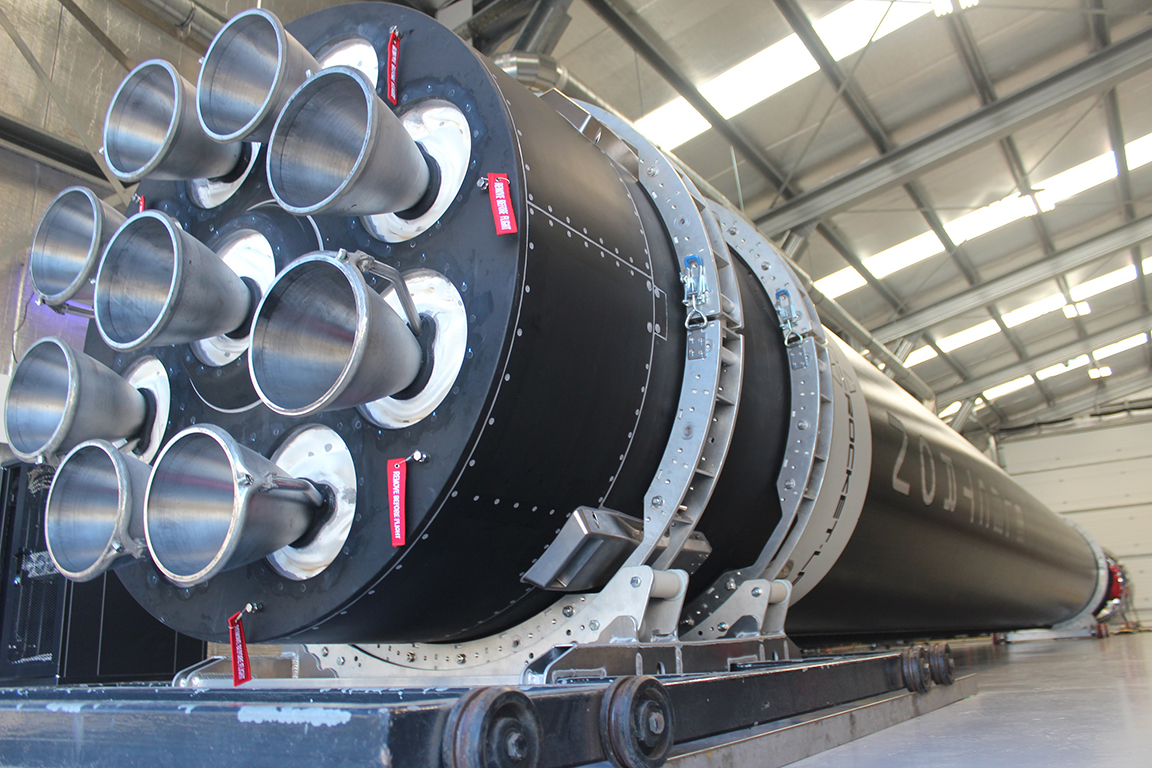

News
Rocket Lab channels SpaceX-like rapid launch capability in July 4 Electron mission
The prominent launcher of dedicated small satellite launches, Rocket Lab, looks to achieve SpaceX-like rapid launch capability of its Electron rocket. The company is targeting its shortest turn around time between missions from the same launch pad. Just three weeks ago, Rocket Lab returned to operational launch status following the easement of Covid-19 restrictions at the company’s Launch Complex 1 in Mahia, New Zealand. The Electron rocket completed its twelfth mission nicknamed “Don’t Stop Me Now” which supported a rideshare payload of five smallsats to orbit. Now, Rocket Lab is ready for its third mission of 2020 – the second in just three weeks – with Electron’s thirteenth mission “Pics Or It Didn’t Happen.”
The launch window for #PicsOrItDidntHappen opens on 3 July UTC. Lift-off will take place from Rocket Lab Launch Complex 1 Pad A on the Mahia Peninsula. pic.twitter.com/01sDCXVj03
— Rocket Lab (@RocketLab) June 15, 2020
Rideshare mission of space cameras
The “Pics Or It Didn’t Happen” mission features a rideshare manifest consisting of seven small satellite payloads for customers Planet, In-Space Missions, and rideshare and mission manager Spaceflight Inc.’s customer Canon Electronics. The majority of payloads are Earth-imaging satellites inspiring the “Pics Or It Didn’t Happen” mission nickname. The primary payload, Canon Electronics Inc.’s CE-SAT-IB microsatellite, will demonstrate the company’s high definition and wide-angle Earth-imaging capabilities and will serve as a testbed for future opportunities of mass production. Also aboard Electron is five of Planet’s latest generation SuperDove (Flock4e) Earth-observation satellites equipped with new sensors to produce higher quality images of Earth’s landmass on a near-daily basis. The UK enterprise In Space Missions provides the final payload with its maiden Faraday-1 6U CubeSat. According to In Space Missions, Faraday-1 is “the first in a series of satellites that will provide a turnkey service for commercial customers and research organizations wanting to access to space at a competitive and affordable cost.” Currently, In Space Missions has four more satellites under contract with the Faraday service.
Rocket Lab’s carbon composite Electron booster propelled by nine 3D-printed Rutherford sea-level engines capable of 36,000lbf (162kN) of thrust will send all payloads to a 500km sun-synchronous low Earth orbit at an inclination of 97.5 degrees.
It's almost time to go to space! Today's mission will see seven small sats launched to a 500 km circular orbit for @SpaceflightInc customer @Canon, as well as small sat operators @planetlabs and @Heads_InSpace. pic.twitter.com/mMKENVBeLa
— Rocket Lab (@RocketLab) July 4, 2020
Rapid launch capability within reach
According to Rocket Lab, a new Electron booster is produced in-house approximately every eighteen days at its production facility in Auckland, New Zeland. While Electron currently only launches from Launch Complex 1 on New Zeland’s Mahia Peninsula, Rocket Lab looks to further open small satellite access to orbit and expand its launching capabilities with two more operational launch complexes targeted to begin service later this year. The Mahia Peninsula location has recently undergone expansion, adding the neighboring Launch Complex 1B while a third launch location, Launch Complex 2, has been opened at the Mid-Atlantic Regional Spaceport in Wallops Island, Virginia.
Lots of launch pads, we got ‘em. Electron is on the pad at LC-1A this week with a front row view of construction progress on LC-1B. pic.twitter.com/ijZAVRc6yV
— Rocket Lab (@RocketLab) July 1, 2020
Rocket Lab Founder and CEO, Peter Beck, states that multiple launch locations “enables our small sat operators to do more, spend less, and get to orbit faster” and that “Rocket Lab has eliminated the small sat waiting room for orbit. We’ve focused heavily on shoring up our rapid launch capability in recent years and we’re proud to be putting that into practice for the small sat community with launches just days apart.”
The rocket backlog. pic.twitter.com/AhHlbNvEmq
— Peter Beck (@Peter_J_Beck) May 15, 2020
With an expansive backlog of Electron boosters, Rutherford engines, and the capability to soon launch missions back-to-back from neighboring launchpads Rocket Lab aims to break into the market of rapid launch capability joining the likes of SpaceX and its Falcon 9 rocket which has launched 91 times (89 times successfully) since 2010. The company also looks to break into the booster recovery market also pioneered by SpaceX.
Earlier this year, Rocket Lab completed a successful mid-air recovery demonstration of a parachute equipped test article with a helicopter and a specially designed grappling hook. Beck recently revealed on Twitter that Rocket Lab is targeting the seventeenth flight of the Electron to debut fully operational recovery efforts of the first stage booster to occur at some point before year’s end.
The “Pics Or It Didn’t Happen” mission previously scheduled for July 3rd, moved to July 5th, then pushed up to July 4th is now targeting liftoff NET 21:19 UTC/5:19 pm EDT from LC-1 in New Zealand taking advantage of more favorable launch weather conditions. Rocket Lab has stated on Twitter, however, that there is a “relatively high chance” of the launch attempt scrubbing to a later date as the possibility of high ground winds still persists. Should they be needed, backup launch opportunities extend through July 16th.
The “Pics Or It Didn’t Happen” Electron and payload are currently vertical at LC-1 ahead of the launch attempt. A Livestream of the effort will be made available approximately fifteen minutes ahead of liftoff posted to the company’s social media accounts and available on the company’s website: www.rocketlabusa.com/live-stream.
News
The Tesla Diner is basically finished—here’s what it looks like
The company first broke ground on the Diner, Drive-in, and Supercharger location in September 2023. Now, it has served one of its first internal customers.

Tesla has finally completed the construction of its highly anticipated Diner, Drive-in, and Supercharger in Los Angeles, and recent photos of the interior’s “retro-futuristic” style are making their way around the internet.
X user Brad Goldberg shared photos from the Tesla Diner site last Tuesday, depicting some of the Supercharger stalls, indoor and outdoor seating areas, multiple neon lights, and even an Optimus robot. Goldberg also noted that there had been a “flurry of activity on site” while he was snapping the photos last week, suggesting that the restaurant location could be getting close to opening.
The Tesla Diner also served one of its first internal customers in the past few days, as Elon Musk posted on X on early Monday morning that he had just finished up eating a meal at the site:
I just had dinner at the retro-futuristic Tesla diner and Supercharger.
Team did great work making it one of the coolest spots in LA!
The photos also show that the site is pretty much done, with some of them even showing vehicles charging at the charging stalls.
You can see some of the latest photos of the Tesla Diner below.
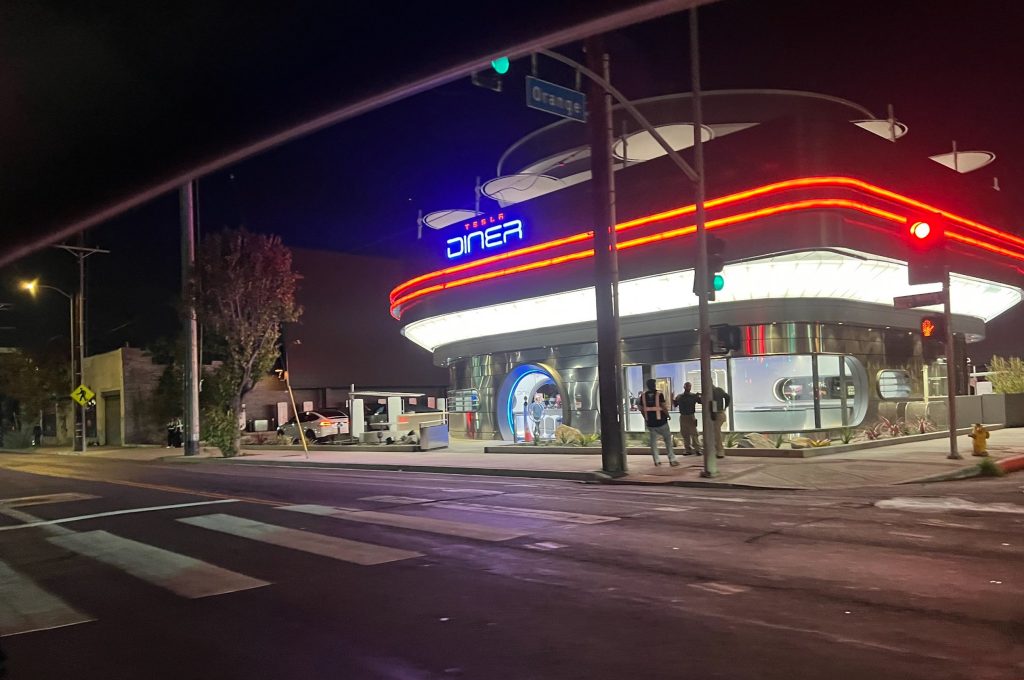
Credit: BradGoldbergMD | X
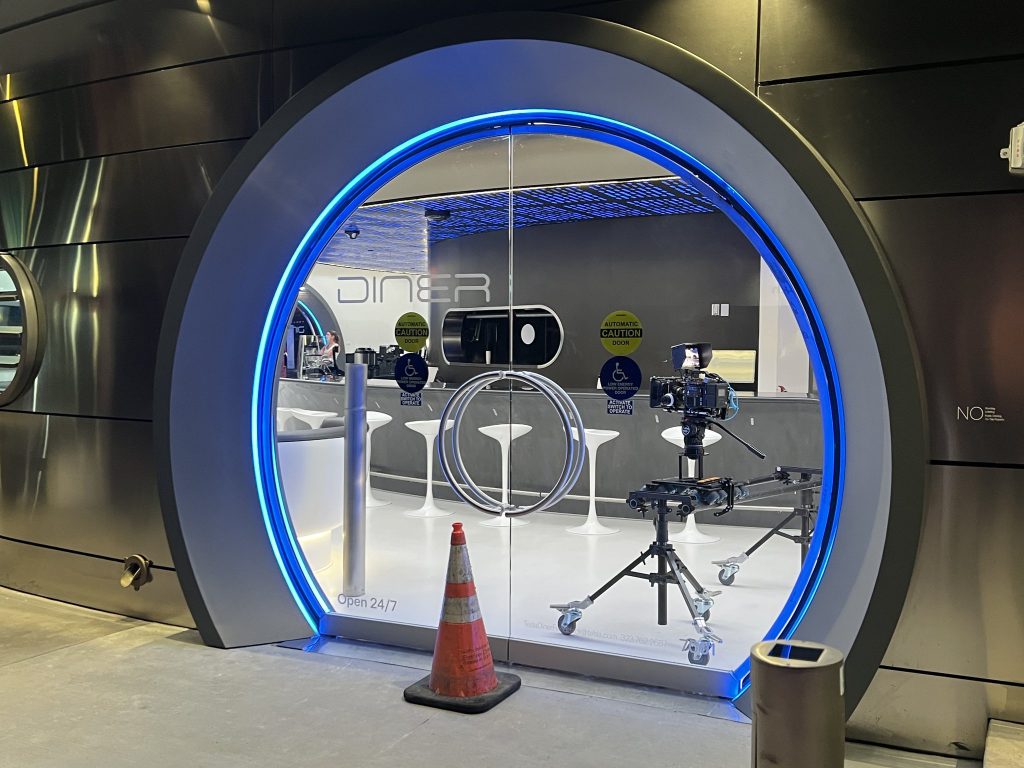
Credit: BradGoldbergMD | X
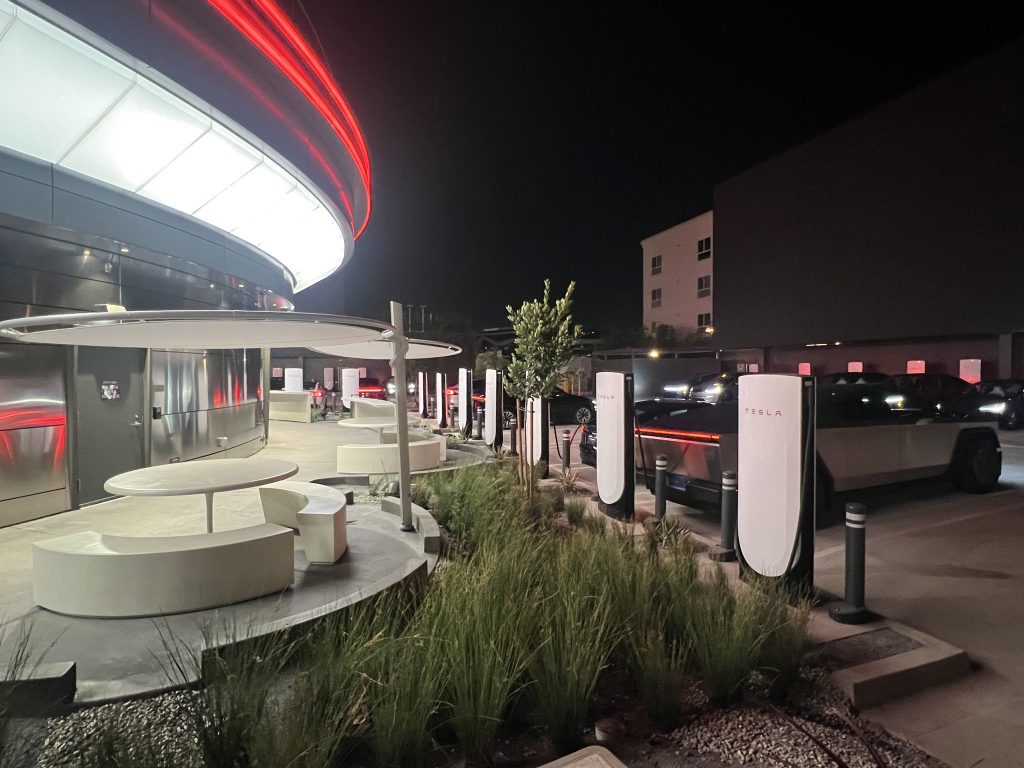
Credit: BradGoldbergMD | X
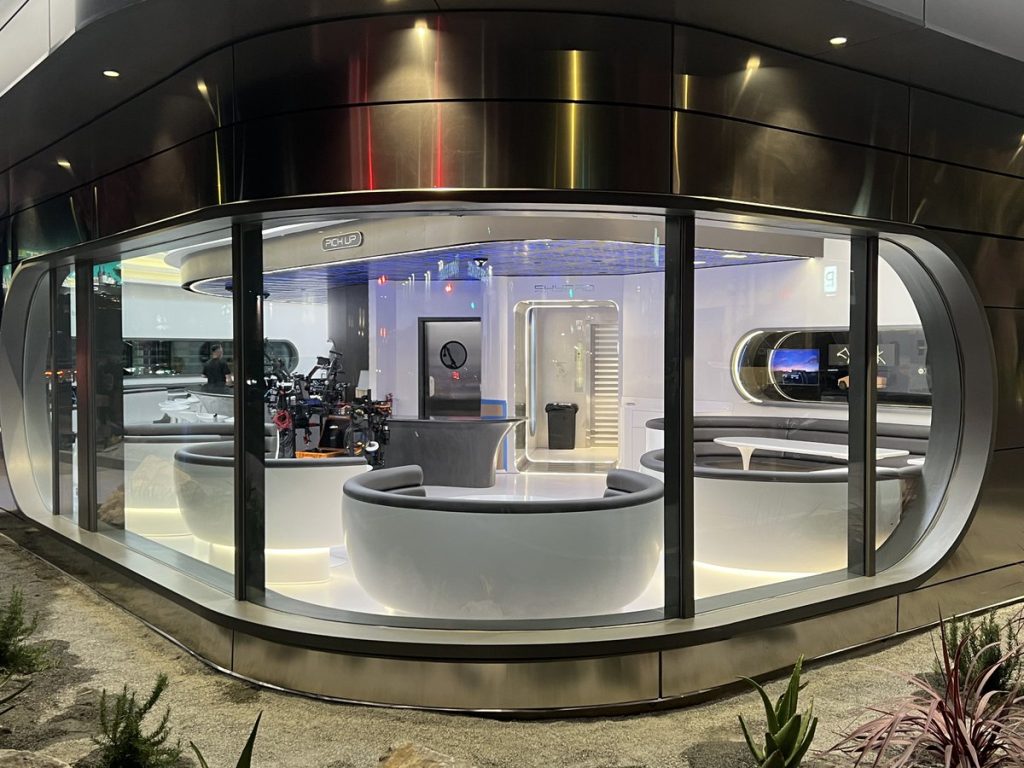
Credit: BradGoldbergMD | X
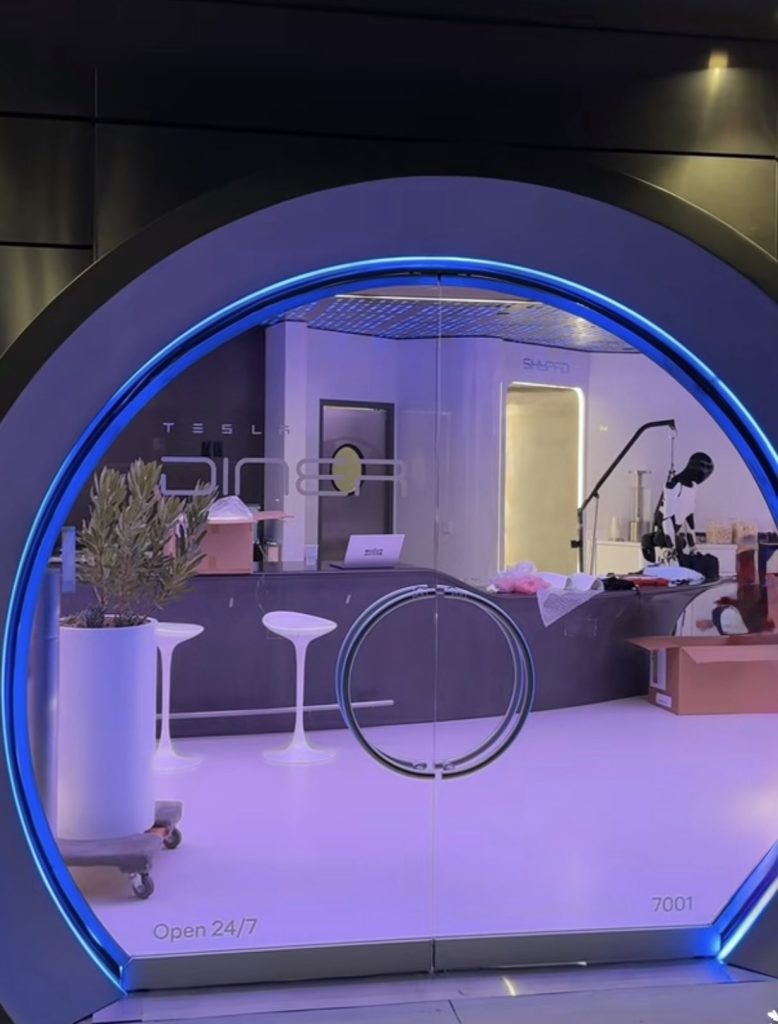
Credit: TeslaKing420 | X
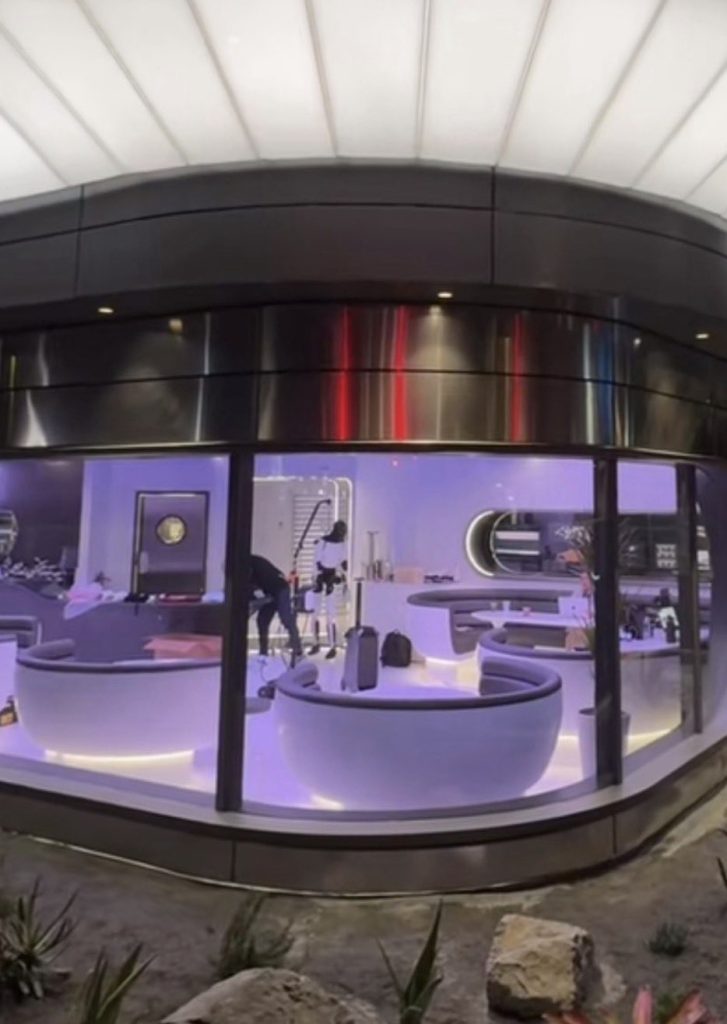
Credit: TeslaKing420 | X
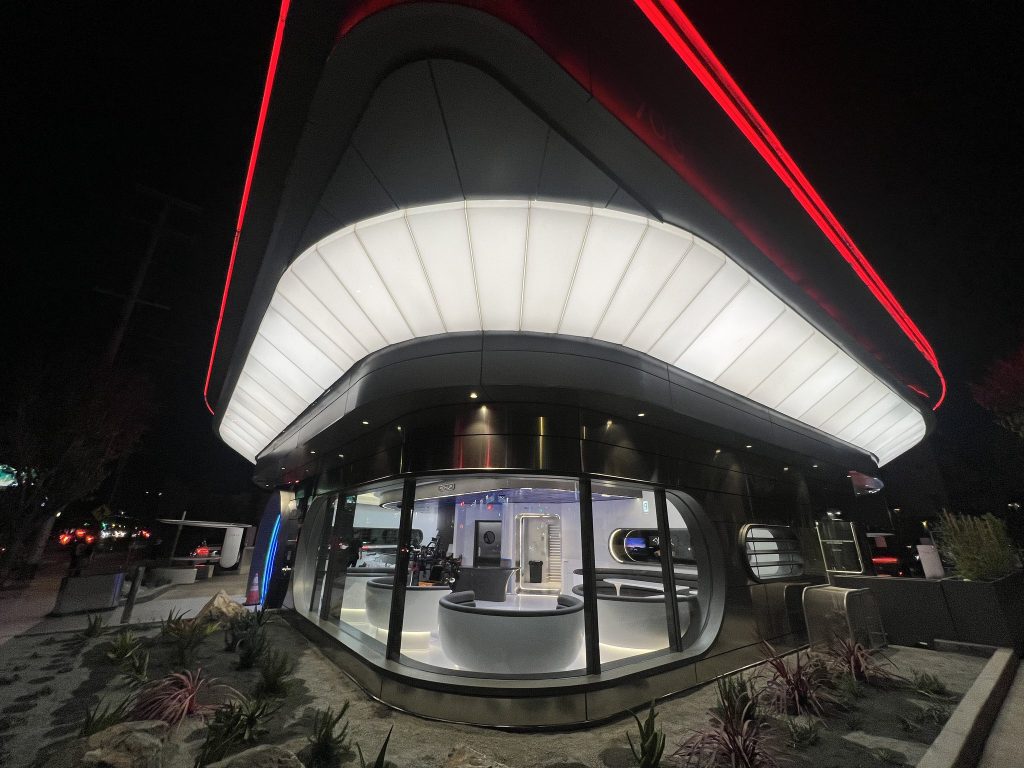
Credit: Brad Goldberg (via Sawyer Merritt on X)
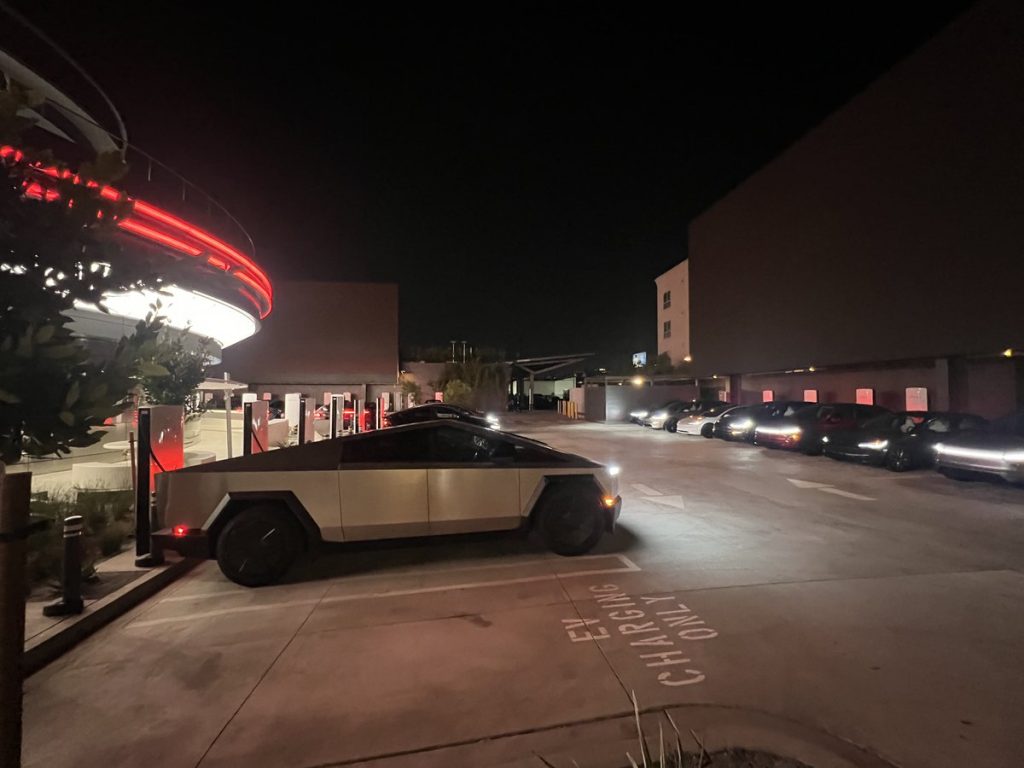
Credit: Brad Goldberg (via Sawyer Merritt on X)
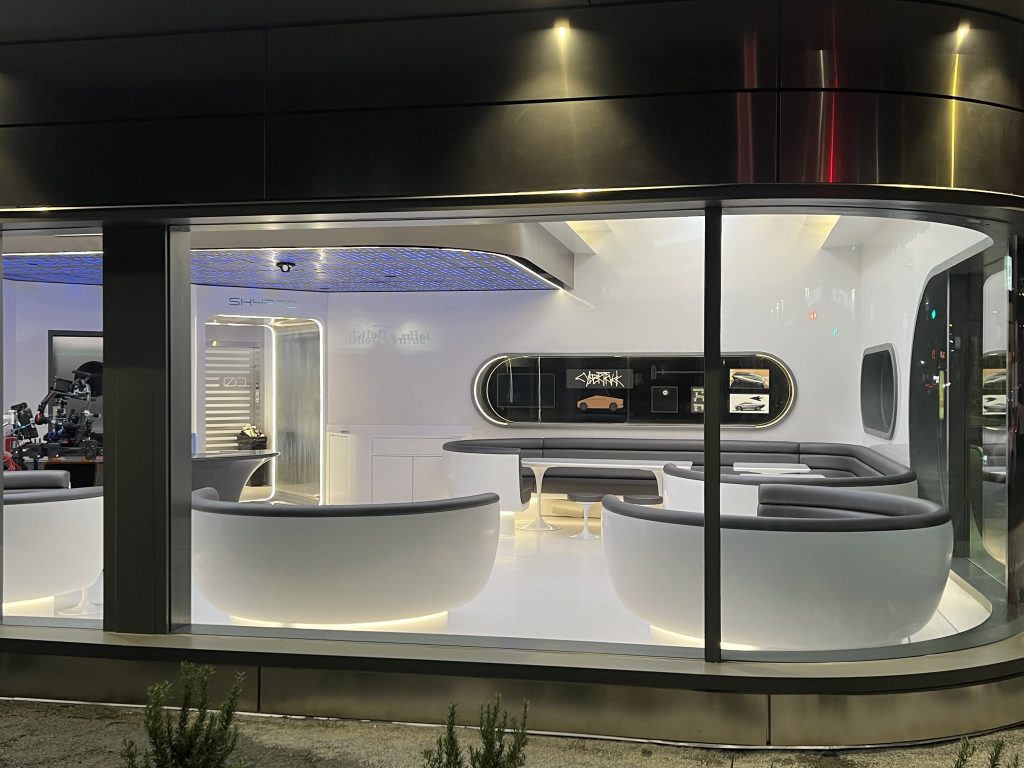
Credit: Brad Goldberg (via Sawyer Merritt on X)
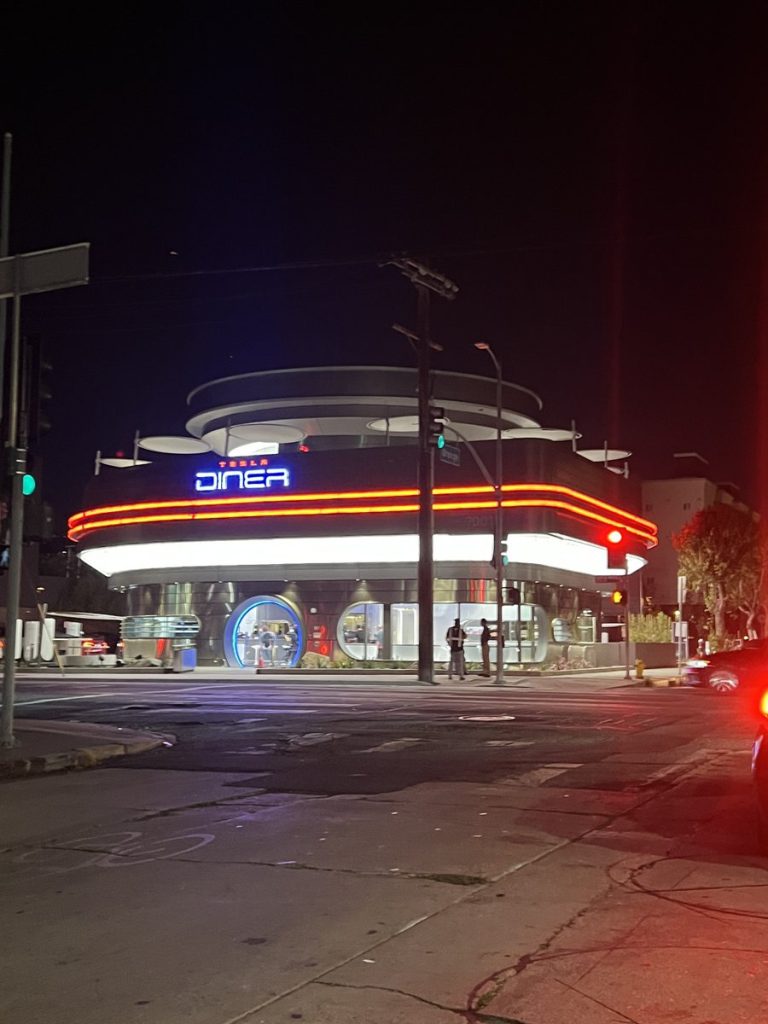
Credit: Brad Goldberg (via Sawyer Merritt on X)
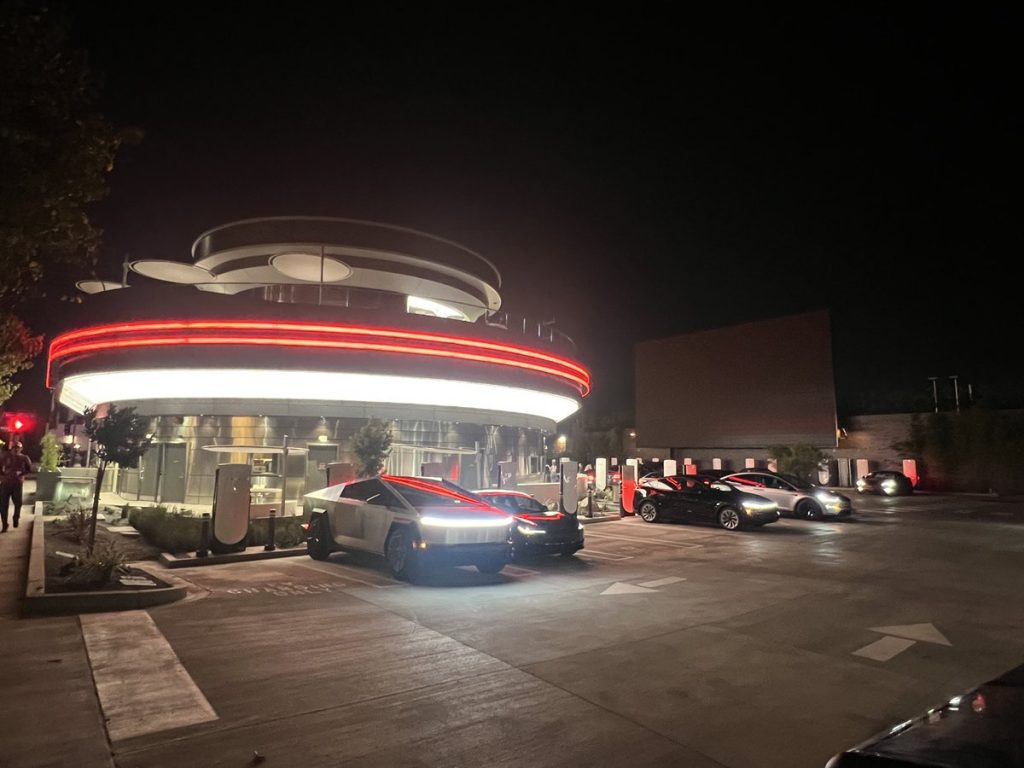
Credit: Brad Goldberg (via Sawyer Merritt on X)
READ MORE ON TESLA’S LA DINER: Tesla readies Drive-In Diner Supercharger for launch with app inclusion
When will the Tesla Diner open to external customers?
While it’s still not open to external customers yet, the news again suggests that the company could be close to an official opening date. Tesla first broke ground on the Diner in September 2023, after receiving a wave of building permit approvals throughout that year. Teslarati also covered much of the construction progress throughout last year, including when crews installed the first and second drive-in screens.
Located at 7001 West Santa Monica Boulevard, the idea was first discussed in 2018 by Musk and a few others on Twitter, featuring 1950s rock and roll, waiters on roller skates, and drive-in movie theater screens playing clips from some of history’s best movies. Notably, the photos of the front doors also show that the site will be open 24 hours a day, 7 days a week, whenever it does end up opening.
Tesla’s progress on Supercharger with diner, drive-in seen in aerial footage
Elon Musk
Tesla updates Robotaxi app with several big changes, including wider service area
Tesla’s Robotaxi app has gotten another update, and this time it offers a wider service area, but there are a lot of other changes, too.
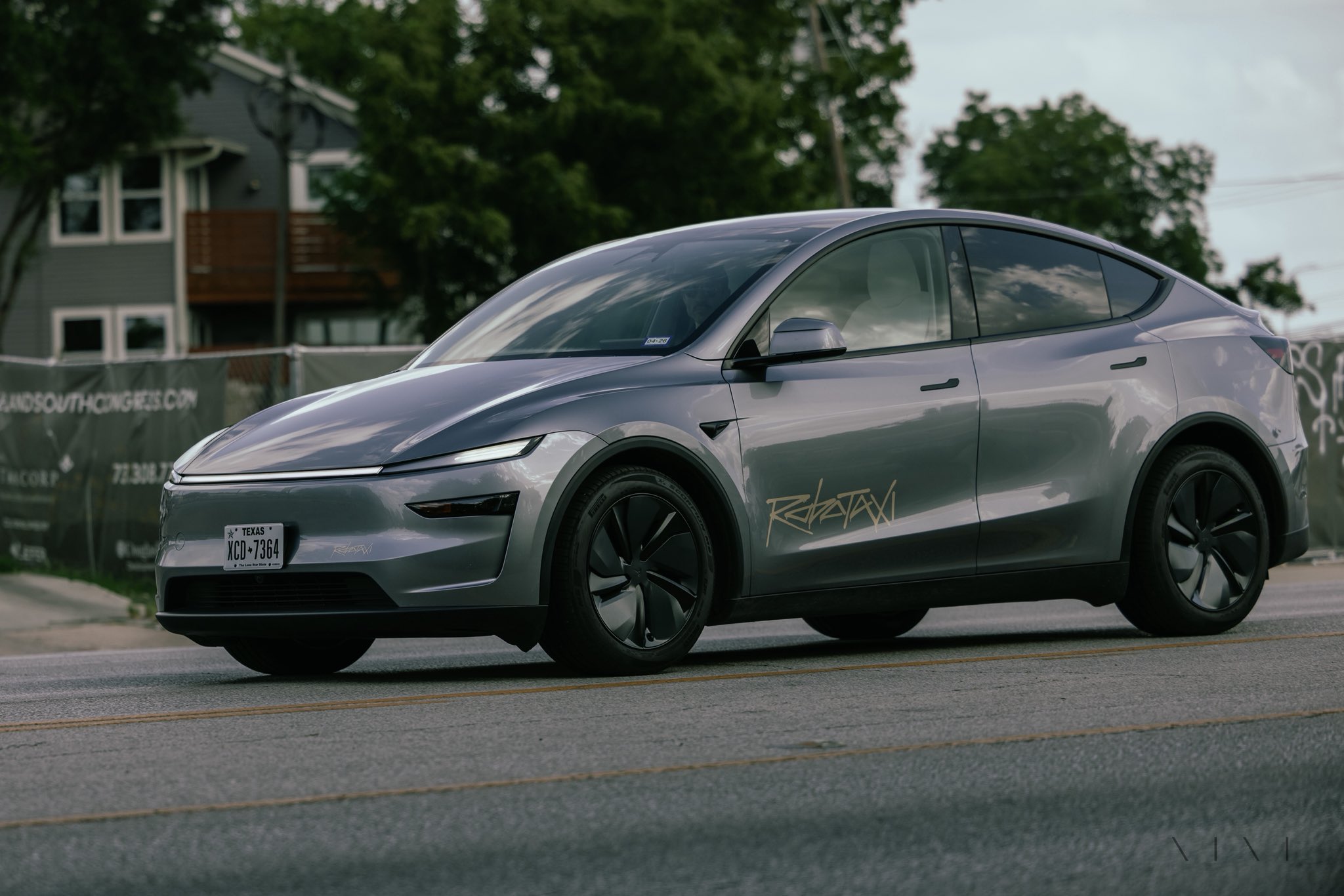
Tesla is rolling out its second update to its Robotaxi app after it launched the driverless ride-hailing service less than a month ago in Austin.
Among the changes, Tesla has expanded its service area, added walking directions to both the pickup and dropoff areas, added closing times for dropoff destinations, and allowed editing of your destination after booking a ride.
The new app version, Robotaxi 25.7.5, was rolled out on Monday morning. The biggest change is the near doubling of the service area, as Tesla expanded the possible travel region by a significant margin:
Tesla’s Robotaxi geofence in Austin grows, and its shape is hard to ignore
It’s no surprise Tesla decided to push the envelope with a new, interesting shape to the geofenced area that is hard to ignore.
The new region includes notable points of interest in Austin, most notably is the University of Texas at Austin. Tesla included the school, which has over 53,000 students, in this expansion, and it could be pushing the app and service to some of them in the coming weeks.
It’s a great addition as it is a highly concentrated area of the city, full of students and visitors.
Robotaxi app changes outside of new service area
Tesla has also added a handful of new changes. With its first update of the Robotaxi app, Tesla addressed several highly requested changes, including the ability to adjust the pickup location instead of being fixed to a default spot.
Walking Directions to Pickup and Destination
In congested and large metro areas, ride-sharing pickups are sometimes confusing to navigate to. When it comes to dropoff at your destination, exiting the vehicle at the front door is not always possible (many in Austin noticed this at Terry Black’s BBQ).
Tesla Robotaxi’s biggest challenge seems to be this one thing
Now, the app will guide you on how to reach your Robotaxi and your destination when pickup and dropoff are not available at the entrances of the establishments you’re visiting.
Search Results now show closing times
If you’re going to arrive at an establishment close to its closing time, the Robotaxi app will now warn you that you could arrive with only a few minutes to spare, or you could miss it altogether.
This is a nice touch because there’s nothing worse than craving some ice cream at 10 p.m., only to arrive and see the doors are locked and the lights are off.
Many navigation apps have this integrated to eliminate any confusion about closing times.
Destination editing after booking
This feature could go hand-in-hand with the closing times. As a business might close shortly after your arrival, you might find it advantageous to visit another establishment that has more time to serve you.
You can now pivot your destination after you have entered your Roobtaxi.
News
Tesla’s Robotaxi geofence in Austin grows, and its shape is hard to ignore
The expansion stayed true to Elon Musk’s rather lighthearted and juvenile humor at the same time.

Tesla has rolled out an expanded geofence for its Robotaxi pilot program in Austin, Texas. With the expansion, the Robotaxi’s geofence now rivals Waymo’s service area, while staying true to Elon Musk’s rather lighthearted and juvenile humor at the same time.
New Robotaxi geofence expansion
Elon Musk actually announced the expansion of the Robotaxi service’s Austin geofence last week, with the CEO stating that the company is expanding its coverage in the city over the weekend. At the time, Musk also mentioned that Tesla would be looking to launch its Robotaxi service in the Bay Area in a month or two.
Sure enough, there were no delays with the Austin Robotaxi expansion’s rollout. On Sunday, electric vehicle owners reported on social media that their Robotaxi apps have been updated with a much larger geofence. The rates of the Robotaxi service was reportedly still kept at a flat rate of $4.20 per ride.
Industry watchers also observed that with Tesla’s newest update, the Austin Robotaxi program now operates in an area that is quite comparable to Waymo’s. During the initial launch of Austin’s Robotaxi service, critics were keen to point out that Tesla’s operational area was notably smaller than Waymo’s geofence.
New shape pisses off critics, makes fans laugh
The fact that Tesla was able to expand its Robotaxi service’s operational area in Austin over the weekend is undoubtedly impressive. In true Elon Musk fashion, however, it also ended up pissing off critics because Tesla’s geofence in Austin is now shaped like a phallus—intentionally.
This was something that was suggested by TSLA retail investor Steve Mark Ryan as a joke, but in true Tesla spirit, the company did just that. It’s a classic Tesla move if one were to think about it.
Elon Musk and the Tesla team are keen to play around the joke too, with Musk posting on X that the Robotaxi service is now “bigger, longer, and uncut.” The official Robotaxi service’s X account, on the other hand, also wrote that its new service area is “harder, better, faster, stronger.”
-

 Elon Musk2 weeks ago
Elon Musk2 weeks agoTesla investors will be shocked by Jim Cramer’s latest assessment
-

 News2 days ago
News2 days agoTesla debuts hands-free Grok AI with update 2025.26: What you need to know
-

 Elon Musk4 days ago
Elon Musk4 days agoxAI launches Grok 4 with new $300/month SuperGrok Heavy subscription
-

 Elon Musk6 days ago
Elon Musk6 days agoElon Musk confirms Grok 4 launch on July 9 with livestream event
-

 News1 week ago
News1 week agoTesla Model 3 ranks as the safest new car in Europe for 2025, per Euro NCAP tests
-

 Elon Musk2 weeks ago
Elon Musk2 weeks agoxAI’s Memphis data center receives air permit despite community criticism
-

 News4 days ago
News4 days agoTesla begins Robotaxi certification push in Arizona: report
-

 News2 weeks ago
News2 weeks agoTesla sees explosive sales growth in UK, Spain, and Netherlands in June
















